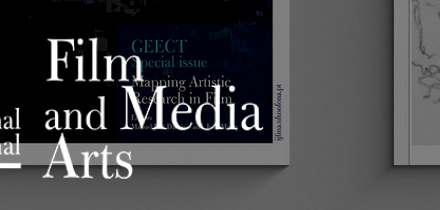The “big four” American entertainment awards—the Emmy for television, the Grammy for music, the Oscar for film, and the Tony for theater, often referred to by the “EGOT” acronym—have long served as a barometer of mainstream taste cultures in their respective fields. While literature on media awards is not completely absent, its scope has been narrow. Popular press works on the somewhat standardized journalistic narratives surrounding the EGOT, particularly the Oscars. Scholarly literature has largely focused on awards as they pertain to the international art cinema circuit and its attached film festivals, such as the Cannes Film Festival.
This call, while respecting the literature that addresses these familiar narratives, intends to reimagine and reinvigorate discussion of entertainment awards and their meaning within the media industries.
Awards are a near-ubiquitous feature of media cultures across mediums, narrative forms, industrial roles, and both geopolitical and virtual spaces: The Nolly Awards, for the span of a few years, recognized achievement in Nollywood films, i.e. the cinema of Nigeria; TikTok user Ashley Hufford (@ashleyhufford) recently sought to establish the “Tik Tok Tony Awards”; The Ursa Major Awards is awarded for “the furry arts.” What purpose do these and other awards serve for their respective communities, beyond the oft-stated objective of recognizing excellence? In what cases do awards recognize achievement in areas beyond the media text? In what aspects of the media industries are awards rarely given, but excellence still expected? When is the stated purpose or ultimate effect of an award something distinctly separate from excellence?
Furthermore, we are interested in the intersection of awards with critical discourse on political, social, and identity-based issues. Media award shows have long served as a locus for the discussion of issues through sartorial statements, protests on and off the red carpet, and political statements in acceptance speeches or other awards forums. Recent conversations about inclusion and equity for marginalized communities in nominations and organizational membership have served to highlight the institutionalized bigotry of the media industries and media cultures more generally. This advocacy has come from many perspectives, both within those industries, from cultural intermediaries in the fourth estate, and from vocal audience members. Such discussions have been accompanied by some change, including the establishment of the Academy Inclusion Standards in 2020, and the 2019 Tony for Best Musical Revival going to Oklahoma!, a production which transformed the traditional work into an allegory for racism and intolerance in contemporary America. It remains to be seen, however, whether these gestures signal a larger, permanent shift towards equity, or whether they will remain largely symbolic events. Media awards thus provide a microcosm of larger representational concerns, one that can serve as a rich point of study for scholarly inquiry.
The Velvet Light Trap #89 seeks to challenge and expand our understanding of media awards so that we may better understand the media ecologies that support such events. These awards bridge media criticism, sociocultural issues, national and international politics, and cultures of art and entertainment into discourses both in and outside of the mainstream. We welcome submissions that push the boundaries of current media awards literature, use media award contexts as key case studies, or exploring any of the following themes:
-
Reimagining our approach to or conception of major awards, ‘awards seasons,’ and their attendant discourses, including the Oscars, Tonys, Emmys, and Grammys
-
Media awards outside North American and Anglophone contexts
-
The various meanings of entertainment and media award shows in relation to the local, national, and global contexts.
-
Historical media awards (currently ongoing or defunct), particularly situated within sociocultural contexts
-
Explorations of the various cultural intermediaries that enable and coordinate the hubbub of “awards seasons,” including critics, culture writers, and so on.
-
Recognition of technical, below-the-line, organizational, or corporate achievement
-
Recognition of achievement for communities of color and marginalized groups (e.g. NAACP Image Awards, the Unforgettable Gala)
-
Recognition of achievement in marginalized groups (e.g. the GLAAD Media Awards, the Mental Health Media Awards, the Media Access Awards)
-
Recognition of achievement in media subcultures, communities, or genres (e.g. the Ursa Major Awards, the Saturn Awards, the r/Aww Awards)
-
Recognition of achievement in pornography (e.g. the PornHub Awards, the GayVN Awards)
-
Recognition of social media and digital content achievement (e.g. the American Influencer Awards, the Webby Awards, the Streamy Awards, the Shorty Awards)
-
Recognition of achievement in video games (e.g. the Game Awards, the Game Critics Awards)
-
Recognition of achievement in comics and animation (e.g. the Annie Awards, the Eisner Awards)
-
Recognition of achievement in understudied, under-recognized or niche media types
-
Intentionally subversive media-related awards (e.g. the Razzies)
-
Recognition of achievement in relation to conventions and/or fandom-specific contexts
-
Controversies related to a specific media-related award, award show, or win/loss
Submission Guidelines
Submissions should be between 6,000 and 7,500 words, formatted in Chicago Style. Please submit an electronic copy of the paper, along with a separate one-page abstract, both saved as a Microsoft Word file. Remove any identifying information so that the submission is suitable for anonymous review. Quotations not in English should be accompanied by translations.
About the Journal
TVLT is a scholarly, peer-reviewed journal of film, television, and new media. The journal draws on a variety of theoretical and historiographical approaches from the humanities and social sciences and welcomes any effort that will help foster the ongoing processes of evaluation and negotiation in media history and criticism. While TVLT maintains its traditional commitment to the study of American film, it also expands its scope to television and other media, to adjacent institutions, and to other nations’ media. The journal encourages both approaches and objects of study that have been neglected or excluded in past scholarship.
Graduate students at the University of Wisconsin at Madison and the University of Texas at Austin coordinate issues in alternation, and each issue is devoted to a particular theme. TVLT’s Editorial Advisory Board includes such notable scholars as Ben Aslinger, Caitlin Benson-Allott, Lauren S. Berliner, Dolores Inés Casillas, Aymar Jean Christian, Lisa Dombrowski, Raquel Gates, Dan Herbert, Deborah Jaramillo, Lori Morimoto, Meenasarani (Linde) Murugan, Safia Noble, Bob Rehak, Debra Ramsay, Bonnie Ruberg, Avi Santo, Samantha Noelle Sheppard, Dan Streible, Neil Verma, and Alyx Vesey. TVLT’s graduate student editors are assisted by their local faculty advisors: Mary Beltrán, Ben Brewster, Jonathan Gray, Lea Jacobs, Derek Johnson, Shanti Kumar, Charles Ramírez Berg, Thomas Schatz, and Janet Staiger (emeritus).





